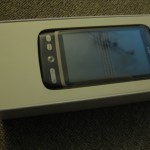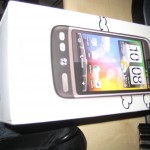
HTC Desire Mini Review
Overview
I have finally made the jump from the iPhone to an Android OS phone. Whilst the OS 4.0 from Apple preview event looked good, there was no sign or mention that they will change the App store and it’s draconian approval process.
HTC vs. Google
I was undecided between the HTC Desire and the Google Nexus One. There two phones run on a similar platform but there are subtle differences such as noise cancellation and track ball on the Nexus vs. Sense UI and an optical track (ball).
The decision was made to go the Desire because:
- It was out in the UK before the Nexus
- Proper physical buttons instead of the touch sensitive buttons
Unboxing
The phone came in a very small package but still managed to fit most of the items I’d expected to see to come with the phone e.g earphones, documents, etc.
I do have to say there was no manual that came with the phone but it was more like a quick start guide. On the first start up of the phone there was another quick introduction but nothing substantial for those who like to read the manual.
Replacing iPhone
After having an Apple iPhone 3G for just over 18 months it was apparent what I missed and what I loved about the new phone.
Pros:
- No download limit – Previously there was a 10mb download limit from the App store or iTunes over the mobile carrier. With Android there is no such limit.
- Removable battery – Not that I plan to change the battery often but it’s nice to know I can.
- Auto focus camera – It bugged me that the iPhone camera did not have macro mode but the HTC Desire even has face recognition.
- Micro USB – A standard connector so I do not have to hunt for an Apple specific one to power the device
- USB mode – Ability to set the mode when it is connected to the computer e.g charge, Sync, Tether…
- Tethering – Ability to tether via USB out of the box (except for the need to download the USB drive in Windows)
- Multitasking – The ability to run multiple threads at a time in the background has it’s pros and cons. For the good parts it’s been everything the iPhone should have done with the push notification. I was getting RSS to update at regular intervals so when I open the app it had them already cached, sending tweets can be done with the app closed so you are free to do other things once the send button is pressed and even Facebook allowed uploading of pictures in another thread!
Cons:
- Headphone profile – Connecting a headphone/earphone to the 3.5mm jack does not change the volume to what it was set to before when a jack was connected.
- Battery life – I was able to make it through the whole day usually without the iPhone running out of power but the Desire does if I play any games for a long period.
- Lack of Apps – Particular high quality games such as Popcap games. There are some good apps but nothing near the amount the iPhone has.
- Multitasking – Apple was correct when they said it would use more power if they enabled multitasking and with the HTC Desire I saw the side effects. This had lead to reducing the amount of background updates and notifications as well as killing some of the other watchdog threads in Twitter and Facebook clients.
Conference calls – There’s no option to allow more one or more people to an existing call.
The phone does have conference calling function but it is not displayed on screen during a call. Pressing the menu button reveals this function
Observations:
- Apps are smaller – Android apps seems to be smaller but that may be because the iPhone Apps may use more custom graphics.
- Headphone jack detection – Whilst connecting a headset does not lower the volume on the Android device, it still stops the music play back if the jack is removed from the port.
- Case – Whilst both the Apple iPhone and the HTC Desire did not come with a case it would have been a nice touch like the HTC HD2.
Personal Preference
I still prefer the Apple iPhone’s keyboard but that may be because I was use to using it the Apple way. The typing of the keys felt slightly less accurate but I’m getting better at it and the spelling corrections are not as well done but the words in the dictionary are much better because it contains some odd words not in the dictionary.
HTC Sense UI does add some good integration from third party companies such as Facebook and Twitter integration to the contacts. The “People” or contacts page allows for linking and unlinking from Facebook profiles. Once linked it will associate people’s profile pictures to the contact on the phone.
There are caveats to this like some profile pictures have really low resolution so it gets blown up on screen when the person calls and also HTC has duplicated some of the functionalities the Android OS provides already for this integration. For example HTC has it’s own version of Facebook application which allows it to link to the peoples page but the non HTC Facebook app also has to be installed in order for it to work. This means there are two apps which appear in the programs list for Facebook.
Summary
I am happy with the trade offs for the phone but I hope the continous improvements made by both Google and HTC will come to fix some of the issues I have raised over time.
In terms of the battery problem I do not think there is anything that can be done without a re-design.





Can you use your own animated gif as a wallpaper???
No you can’t